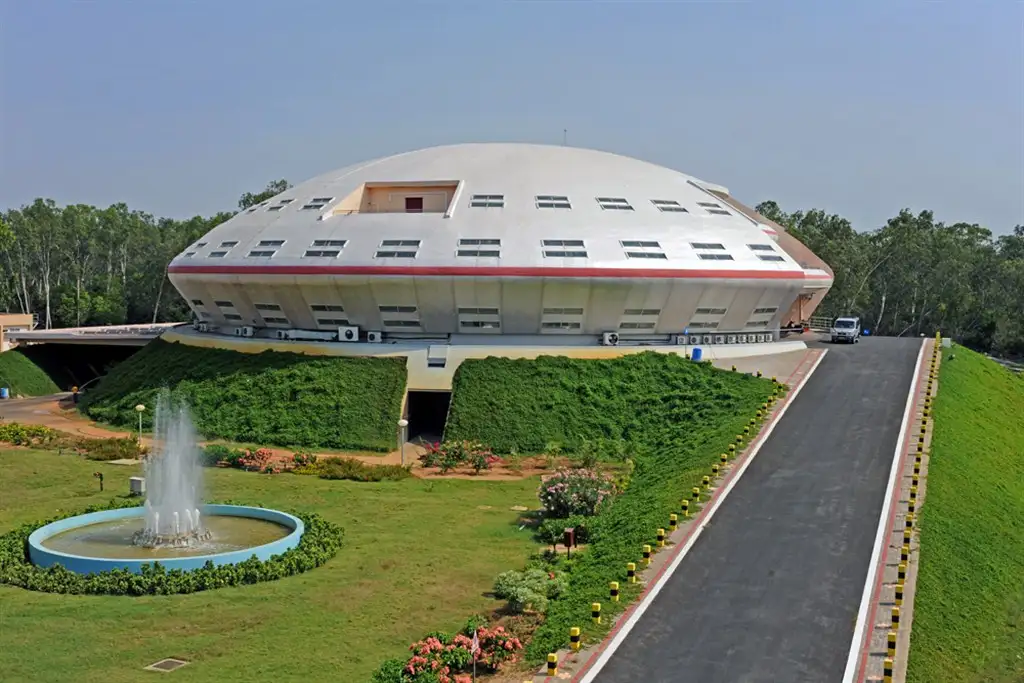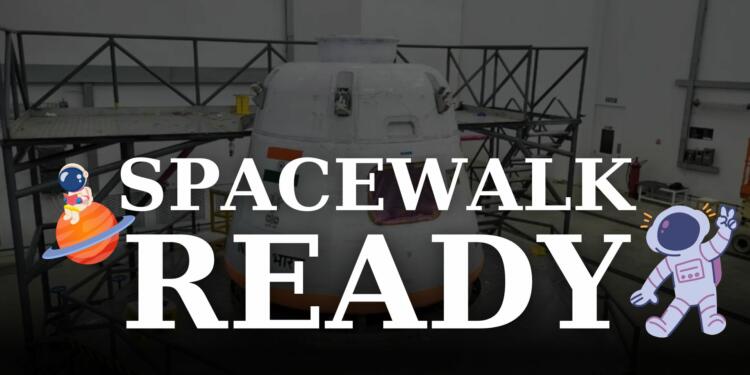Prime Minister Narendra Modi’s recent visit to the Vikram Sarabhai Space Center in Thiruvananthapuram, Kerala, marked a pivotal moment in India’s space exploration journey. At the forefront of discussions was the groundbreaking Gaganyaan Mission, with its four designated astronauts standing as symbols of India’s technological prowess and national aspirations. The mission, spearheaded by these astronauts, represents a historic leap for the nation as it endeavors to become a space-faring nation. Prime Minister Modi’s emphasis on their dedication and the mission’s significance underscores the transformative impact Gaganyaan holds for India’s space program and its place on the global stage.
PM Modi’s remarks
Prime Minister Narendra Modi’s recent address at the Vikram Sarabhai Space Center underscored the profound significance of India’s space program and the pivotal role played by the four designated astronauts in the upcoming Gaganyaan Mission. He hailed the mission as a symbol of India’s technological prowess and national aspirations, marking a historic milestone in the country’s journey towards becoming a space-faring nation.

PM Modi commended the dedication and spirit exhibited by the astronaut-designates, recognizing their invaluable contribution to realizing the ambitious goals of the Gaganyaan Mission. Their selection, he emphasized, reflects not only their individual capabilities but also the collective strength and determination of the nation. He offered words of encouragement, instilling confidence in their abilities to undertake this pioneering endeavor.
Addressing concerns about potential distractions, PM Modi urged for focused training, highlighting the criticality of maintaining unwavering concentration amidst any external attention or pressures. He emphasized the importance of prioritizing the mission’s success above all else, ensuring that the astronaut-designates remain fully prepared and equipped for the challenges ahead.
India’s Space Sector
India’s space sector has witnessed remarkable progress and achievements in recent years, catapulting the nation into the global arena of space exploration and technology. Prime Minister Narendra Modi, in his address at the Vikram Sarabhai Space Center, lauded these accomplishments, recognizing them as testament to India’s growing prowess in space endeavors.
Among India’s notable achievements, the successful Chandrayaan and Mars Orbiter Mission stand out as shining examples of the country’s capabilities in planetary exploration. Chandrayaan, India’s lunar probe mission, made history by discovering water molecules on the Moon’s surface, marking a significant milestone in space research. Similarly, the Mars Orbiter Mission, affectionately known as Mangalyaan, achieved the rare feat of entering Mars’ orbit on its maiden attempt, positioning India as the first Asian nation to reach the Red Planet and the fourth in the world.
PM Modi underscored India’s advancements and records in space technology, highlighting the nation’s ability to launch satellites into orbit with precision and efficiency. Recent successes such as Chandrayaan 3, EXPO-SAT, and INSAT-3DS further exemplify India’s continued commitment to pushing the boundaries of space exploration and satellite technology.
Also Read: The Rise of India: A Roadmap to $5 Trillion Economy by 2027
Space Infrastructure Inauguration
The recent inauguration of three key space infrastructure projects marks a significant stride forward for India’s space capabilities and underscores the nation’s commitment to advancing its space program. These projects, including the PSLV Integration Facility, Semi-cryogenics Integrated Engine and Stage Test Facility, and Trisonic Wind Tunnel, hold immense promise in enhancing India’s space capabilities and expanding the frequency of launches.
The PSLV Integration Facility (PIF) at the Satish Dhawan Space Centre is a state-of-the-art facility designed to streamline the integration process of Polar Satellite Launch Vehicles (PSLV). This facility is poised to significantly increase the frequency of PSLV launches, from the current rate of six per year to an impressive 15 launches annually. Additionally, the PIF is equipped to support launches for the Small Satellite Launch Vehicle (SSLV) and other small launch vehicles developed by private space enterprises. This streamlined integration process is expected to bolster India’s satellite deployment capabilities and contribute to the nation’s space exploration endeavors.

The Semi-cryogenics Integrated Engine and Stage Test Facility, situated at the ISRO Propulsion Complex in Mahendragiri, represents a significant leap forward in India’s propulsion technology. This facility enables the development and testing of semi-cryogenic engines and stages, which are pivotal in increasing the payload capability of launch vehicles. With the capability to test engines with thrust up to 200 tons, this facility plays a crucial role in advancing India’s launch vehicle technology and strengthening its position in the global space market.
The inauguration of the Trisonic Wind Tunnel at the Vikram Sarabhai Space Centre in Thiruvananthapuram underscores India’s commitment to aerodynamic testing and research. This sophisticated technological system facilitates aerodynamic testing for rockets and aircraft, providing critical insights for optimizing vehicle performance and ensuring mission success. The Trisonic Wind Tunnel serves as a cornerstone in India’s efforts to enhance its aerospace capabilities and achieve greater precision in space missions.
The combined investment in these infrastructure projects, totaling approximately Rs. 1800 crore, reflects India’s dedication to advancing its space program and fostering innovation in the sector. The expected outcomes of these developments include heightened efficiency in launch operations, improved reliability of launch vehicles, and enhanced capabilities in aerospace research and development. Ultimately, these infrastructure projects are poised to propel India’s space program to new heights, facilitating more frequent and ambitious missions while bolstering the nation’s position as a key player in the global space arena.
The Vision
Prime Minister Narendra Modi’s vision for India’s space sector is ambitious and forward-thinking, aiming to position the country as a leading player in space exploration and technology by leveraging its scientific and technical prowess. Central to this vision are plans for Moon missions, Venus exploration, and the establishment of a national space station by 2035.
PM Modi envisions India’s space program as a beacon of innovation and discovery, with missions to the Moon and Venus serving as milestones in the nation’s quest for scientific excellence and exploration of the cosmos. These missions not only demonstrate India’s technological capabilities but also contribute to humanity’s collective understanding of the universe.
The Prime Minister’s emphasis on space reforms underscores the government’s commitment to creating an enabling environment for the growth and development of the space sector. By liberalizing policies and fostering partnerships with private industry, India aims to catalyze innovation and investment in space technology, propelling the nation towards self-reliance and global leadership in space exploration.
In addition to technological advancements, PM Modi recognizes the societal benefits of space technology and its role in nation-building. From agricultural and weather forecasting to disaster management and communication, space-based applications have a profound impact on the everyday lives of citizens. By harnessing space technology for the greater good, India can address pressing societal challenges and accelerate progress towards sustainable development goals.
In conclusion, India’s strides in space exploration, exemplified by the Gaganyaan Mission and the inauguration of critical space infrastructure, herald a new era of technological advancement and national pride. Prime Minister Modi’s vision for the space sector underscores the nation’s commitment to innovation, self-reliance, and global leadership. With ambitious plans for lunar and planetary exploration, coupled with strategic reforms and partnerships, India is poised to realize its spacefaring aspirations while harnessing the benefits of space technology for societal progress and development.
Also Read: Deciphering India’s Fierce Message: The UN Budget Slash































